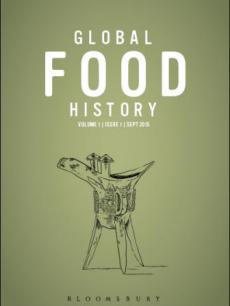“A Transnational Fiasco: Authenticity, Two Chiantis, and the Unimportance of Place”
Abstract: Recent research on authenticity in food products has highlighted the importance of place. I use the example of wine called Chianti—once made in both central Italy and northern California—to reframe the discussion of how authenticity is constructed. I show that both versions of Chianti were dynamic, not stable, products that were the results of networks of capital, geographies of production, and consumer desires. I explain the transoceanic viniferous dialectic that involved consumers and producers, and the curious situation of an Italian wine that seemed authentic despite being made in California. This case suggests that rather than being based on geophysical variables or supposedly traditional production practices, authenticity can be constructed over time far from a good product’s place of origin and using different authenticating symbols.

